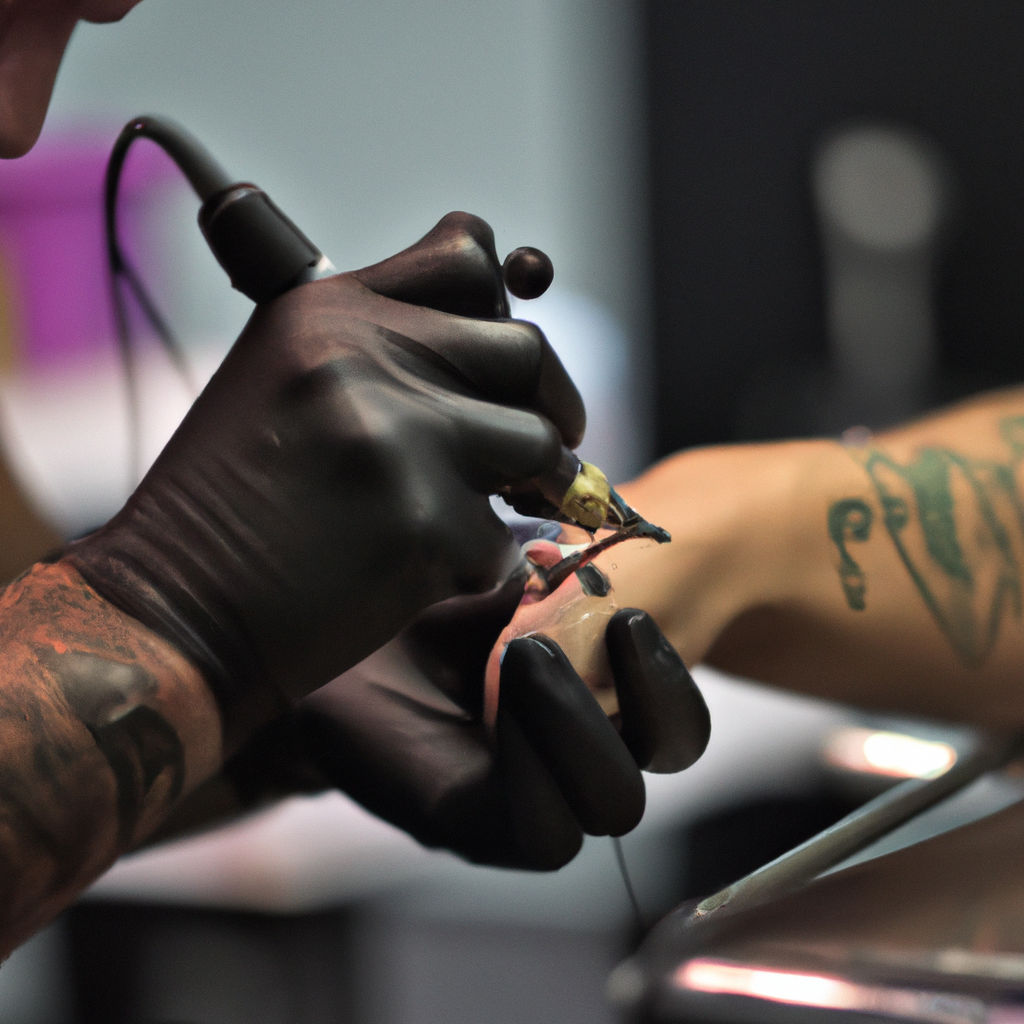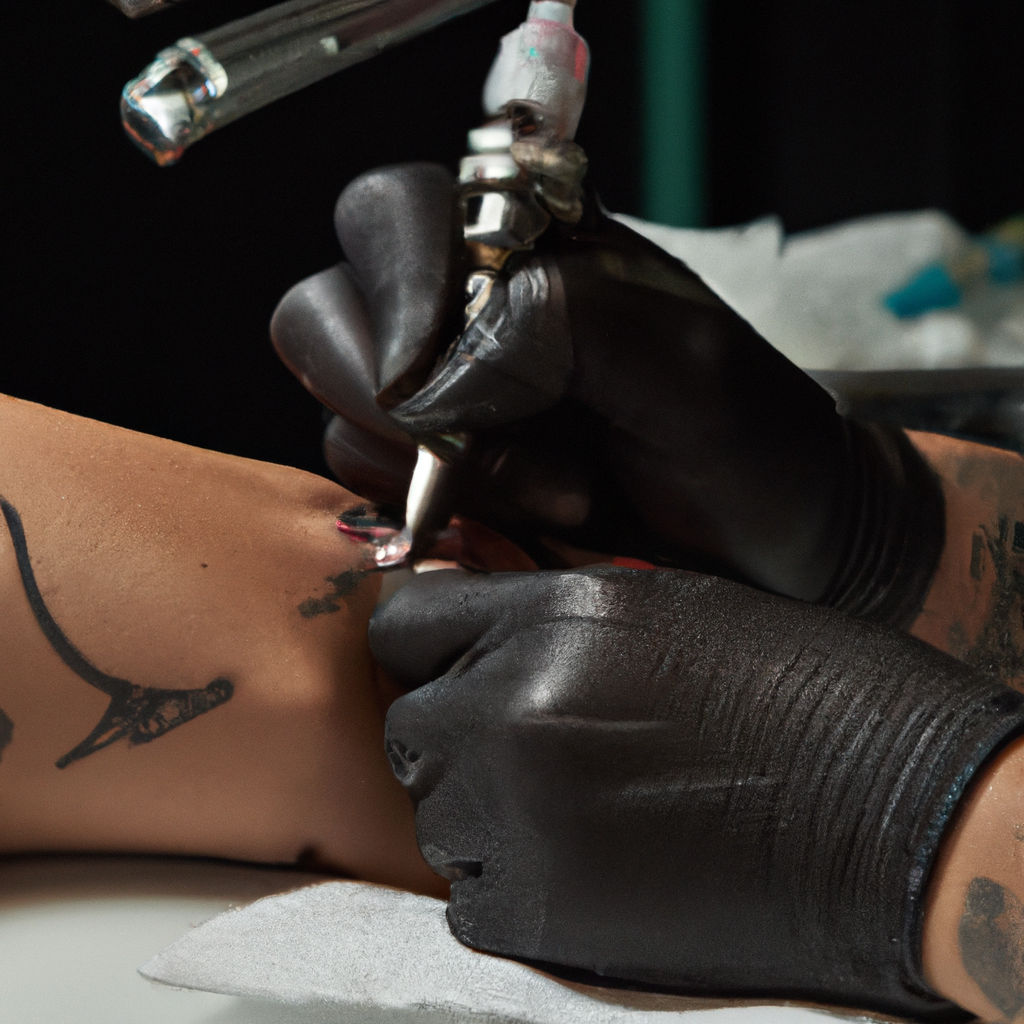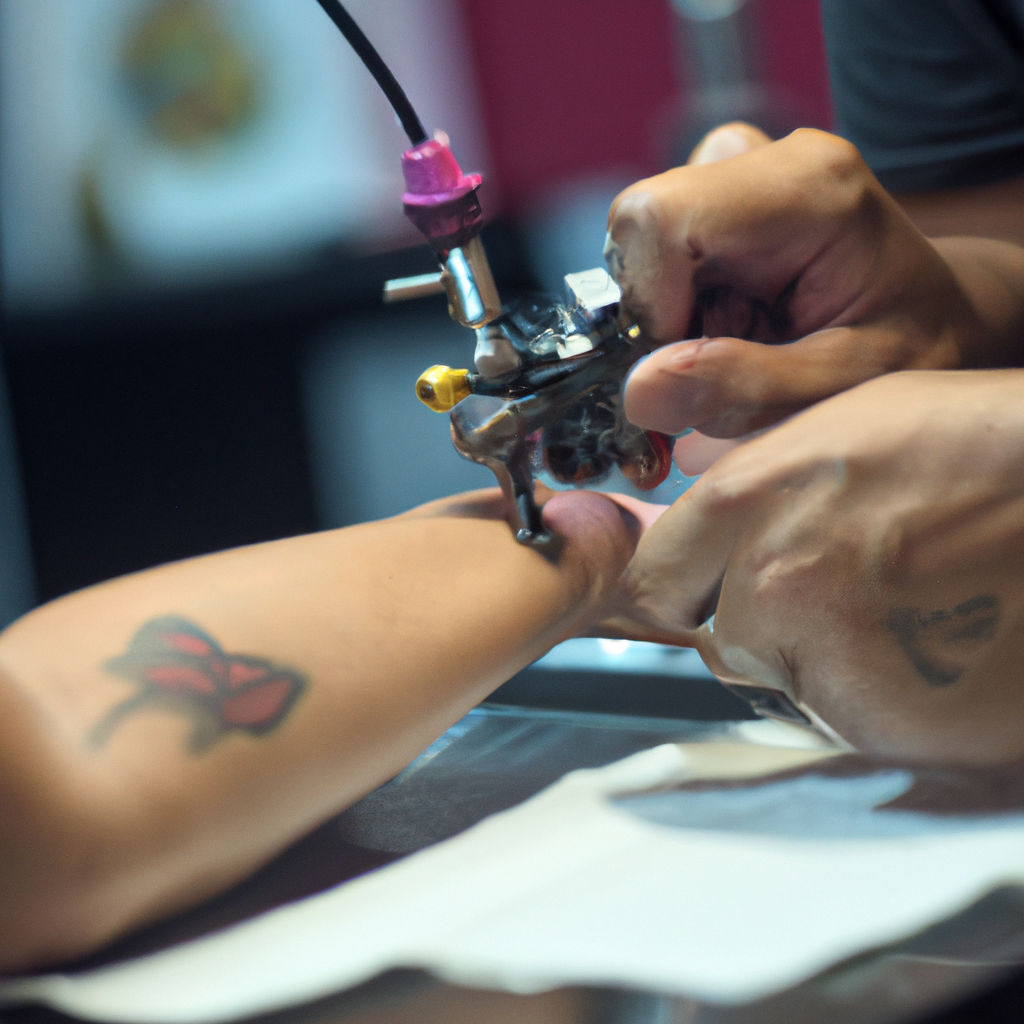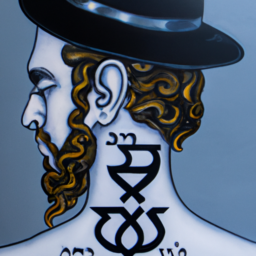“Hebrew Tattoos in 2024: A Blend of Cultural Heritage and Personal Expression”
Hebrew Tattoos in 2024: A Blend of Cultural Heritage and Personal Expression
The cultural landscape of personal expression has begun to bear the remarkable imprint of Hebrew tattoos in 2024. This trend is not a fleeting occurrence but a testament to the growing popularity and significance of Hebrew tattoos worldwide. Body art enthusiasts, bearing symbols and scripts laden with profound cultural heritage and personal meanings, increasingly choose Hebrew tattoos. The aim of this article is to shed light on this fascinating blend of cultural heritage and personal expression in Hebrew tattoos.
A Journey Through Time: The Historical Context of Hebrew Tattoos
Hebrew tattoos trace their roots far back into history, displaying a profound cultural significance beyond mere aesthetics. The tradition of Hebrew tattoos links back to ancient times, and even today, they carry the weight of historical tradition and cultural implication. These tattoos often serve as symbols representing intrinsic Jewish values, ancient teachings, and the pride of the Jewish people.
The profound significance tethered to the Hebrew language and its symbols marks the cultural richness of Hebrew tattoos. Whether the ink bears the Star of David, specific Biblical verses, or meaningful Jewish proverbs, each carries an inherent traditional implication and sentiment. This tradition-infused art form intertwines a part of ancient history with the desire for self-expression, redefining the landscape of personal adornment and body art.
Understanding the Hebrew Language
When one considers the profound significance and the unique characteristics of the Hebrew language, it comes as no surprise why Hebrew tattoos became a popular personal adornment. Scholars believe that the Hebrew language has roots dating back to 1200 B.C. Its alphabet, known as the Alefbet, comprises 22 letters, with no vowels and is read from right to left. With its unique concepts and layered meanings, it has inspired great intrigue and admiration from tattoo enthusiasts around the world.
Popular Hebrew Phrases in Tattoo Designs
An integral part of the allure of Hebrew tattoos lies in the powerful and inspiring phrases that governed people’s lives over the years. Trending Hebrew tattoo phrases include ‘Ahava’ meaning ‘love’, ‘Emunah’ signifying ‘faith’, ‘Kadima’ indicating ‘Forward’, and ‘Shalom’ translating to ‘Peace’. Striking the balance between historical gravitas and personal significance, these phrases have lent themselves perfectly to the world of indelible ink. The deeply personal connection individuals feel with these words and phrases drives the growing trend in 2024.
Modern Popularity of Hebrew Tattoos
As the line between the personal and the public continues to blur in 2024, people are increasingly seeking ways to express their individuality and personal beliefs. Hebrew tattoos have emerged as a platform to do just that, skyrocketing in popularity globally. The amalgamation of rich cultural heritage, profound meaning, and a sense of individuality offered by Hebrew scripts has fostered their rising prominence.
Hebrew Tattoo Statistics and Trends
While estimates vary, the last few years have seen a significant upswing in the number of individuals opting for Hebrew tattoos. Celebrities and influencers have played a massive part in popularizing this trend, showcasing their Hebrew ink on various social media platforms. The most loved Hebrew tattoo designs in 2024 include the Star of David, Hebrew script and Kabbalah red strings. There is also a growing trend of individuals opting for the names of their loved ones in Hebrew. Beautiful, meaningful, and deeply personal – Hebrew tattoos are a canvas of expression that seamlessly encapsulate cultural heritage and personal beliefs.

Cultural Heritage Expressed Through Hebrew Tattoos
The fascinating world of Hebrew tattoos goes beyond the artistry and design. These symbols carry a rich and profound connection with an individual’s cultural heritage. In the year of 2024, the use of Hebrew tattoos as an embodiment of Jewish cultural heritage has reached new heights, marking a resurgence of pride in Jewish roots and symbolism.
The profound connection of Hebrew tattoos and Jewish heritage
From famous Biblical verses to traditional Jewish symbols, Hebrew tattoos often encapsulate the rich tapestry of Jewish history and culture. For instance, tattoos of the Star of David, Hebrew letters, and the Menorah symbol offer a visual representation of ancient Jewish customs and beliefs.
Personal Stories behind Hebrew Tattoos
Alongside the growing popularity of Hebrew tattoos is a multitude of personal stories and sentiments. These tattoos are more than just body art; they serve as a vivid testament to personal narratives and experiences. Several individuals choose Hebrew script or symbols to memorialize a significant event, pay tribute to a loved one, or honor their Jewish ancestry.
Anecdotes of individuals and their Hebrew tattoos
In today’s day and age, these stories range from Holocaust survivors imprinting their identification numbers, as a stark reminder of their survival, to younger generations inscribing their favorite Hebrew quotes or proverbs, as a nod to their cultural heritage. Through the act of tattooing, these personal narratives are etched permanently on one’s skin, essentially transforming an element of the Hebrew language or Jewish symbolism into an enduring part of their identity. By demystifying the personal stories behind these tattoos, we delve deeper into the intimate relationship between cultural heritage and personal expression in Hebrew tattoos.
Personal Expression and Individualism in Hebrew Tattoos
Hebrew tattoos offer a unique canvas for personal self-expression and individualism. They allow individuals to express their identity, beliefs, or personal philosophies more meaningfully and profoundly. As opposed to a standard image or symbol, a Hebrew tattoo can convey an entire idea, principle, or story in a few well-chosen words or symbols.
One popular trend in recent years is the adaptation of Hebrew Scriptures or Biblical quotes in tattoo designs. These powerful and significant phrases offer individuals a creative way to express their personal faith, spirituality, or cultural heritage. For instance, phrases like “Shema Israel,” which represents one of the most important prayers in Judaism, or “Ahava,” meaning love, are often seen in tattoo parlors across the globe.
Others might opt for Hebrew names, symbolizing their connection to family or loved ones. These personal expressions act as a constant reminder and a source of strength for the person.
Hebrew tattoos also offer the flexibility to be integrated into various artistic styles and tattoo designs. From small discreet designs to larger, more complex ones, Hebrew script can be used within a range of creative ideas, depending on individual preference.
The Controversy and Ethical Considerations Surrounding Hebrew Tattoos
Despite the growing popularity and expressive potential of Hebrew tattoos, they are not void of criticism and controversy. Much of this stems from religious and cultural perspectives that consider the act of tattooing sacrilegious or disrespectful.
Within Jewish law, there exists a widely held belief against body modification, citing respect for the human body as a divine creation. Thus, many religious scholars and community leaders argue that Hebrew tattoos can be considered offensive due to this injunction.
However, critics don’t just stem from within the Jewish community. Some argue that using religious and cultural symbols for body art, especially by those outside of the culture, might result in cultural appropriation or misrepresentation.
Hence, it becomes paramount to understand the ethical considerations attached to Hebrew tattoos. It is essential to contemplate the responsibility to respect religious and cultural sensibilities while also expressing personal identity. Ultimately, Hebrew tattoos mark a delicate balance of personal expression, cultural reverence, and ethical considerations, prompting us to question the future dynamics of this trending tattoo style.

The Artistry and Technique Behind Hebrew Tattoos
The world of body art and tattoos is vast, with many distinctive styles, techniques and inspirations. In 2024, Hebrew tattoos have risen to outstanding popularity due to their profound symbolism and aesthetic appeal. This surge in popularity brings to light the incredible artistry and technique involved in creating such tattoos.
Hebrew tattoos showcase the beautiful and intricate qualities of the Hebrew script. Each line, dot and diacritic mark holds its distinct meaning, making the art even more personal for the holder and artist. The technique required for these tattoos necessitates not only an understanding of the language’s syntax but also a deep appreciation of its aesthetics.
Skillful Hebrew Tattoo Artists
Given the intricate nature of the Hebrew script and the cultural importance it holds, it’s quintessential for artists to have a comprehensive understanding of it. There are many specialists in the tattoo industry who have dedicated themselves to mastering this art form. These seasoned experts perfectly combine their artistic capabilities with the language’s unique elements to create magnificent masterpieces etched in the skin.
Through their work, they amplify the fusion of cultural heritage and individual expression. Hebrew tattoo designs, ranging from inspirational quotes to symbolic religious imagery, showcase both the tattooist’s technical talent and the wearer’s personal meaning.
In conclusion, the artistry and technical craftsmanship behind Hebrew tattoos play a significant role in their rising popularity. By blending culture, language and individualism, these tattoos are not just about inking the skin; they’re about etching a part of one’s soul.

In wrapping up the investigation into Hebrew tattoos in 2024, we revisit the intricate intertwining of cultural heritage and personal expression through these body art pieces. Throughout the article, we have delved into the rich historical, linguistic, and cultural dimensions that Hebrew tattoos engender, mirrored in expressive and idiosyncratic designs that reflect not only an individual’s personality but also a vibrant cultural legacy.
This rising trend of Hebrew tattoos has gained momentum remarkable enough to gain mainstream attention, resonating with people from diverse cultures and walks of life. Much of this popularity can be attributed to influential celebrities adorning Hebrew script tattoos, which inadvertently furthers the trend while inspiring curiosity about the mystique of these ancient symbols.
However, as we’ve discussed, this trend is not without controversy. Ethical considerations concerning cultural appreciation versus appropriation, as well as religious interpretations and concerns, are elements that continue to hover around this trend. It’s crucial to consider these factors when deciding to get a Hebrew tattoo.
Another noteworthy aspect lies in the artistic finesse required to render these tattoos. The meticulous artistry required and the unique aesthetic of Hebrew script simply amplify their appeal. Consequently, the works of tattoo artists specializing in these symbols have found a high regard and substantial following.
Looking ahead, it’s clear that Hebrew tattoos have etched an enduring mark in the world of body art. This trend’s trajectory suggests a continuing fascination with these tattoos, which could be seen in ever-evolving designs and concepts. The unique blend of cultural heritage and personal expression intrinsic to Hebrew tattoos will unquestionably continue to captivate tattoo enthusiasts and newcomers alike.
In conclusion, it is integral to remain conscientious of the cultural heritage Hebrew tattoos symbolize even as we champion our individuality and personal experience through these unique art forms. As we move towards the future, Hebrew tattoos will surely continue to unfold new dynamics and dialogues within and beyond the world of body art.
